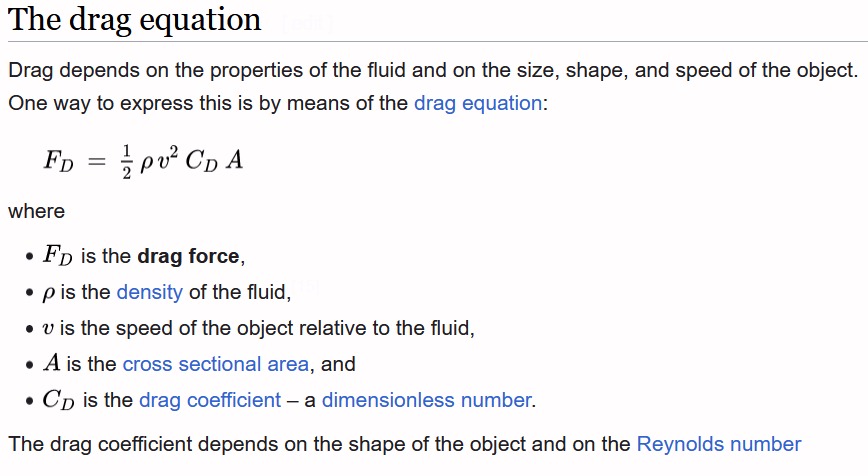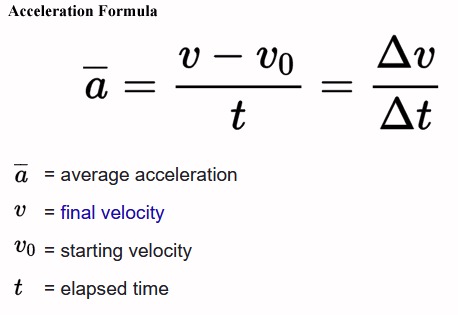t = tipping point
f = feedback loop

I've been thinking about the giant global warming formula that has been formulating in my head for the last few decades.
Human induced climate change is an exponential component of an unordered system (chaos theory). Our climate model uses chaos theory in an attempt to adequately account for humans and forecasts a global average temperature increase of 9 degrees Celsius above pre-industrial levels.
Though the equation is complex... too complicated to write down....
I've lately begun considering trying to write down a small part of it:
Tipping points and feedback loops are parts of an equation that determine the
rate of acceleration in climate change.
What do you think about this?
t = tipping point
f = feedback loop

or
the domino effect * the snowball effect:

Acceleration, tipping points etc. I know that no simple formula exists for any of these. The reason you can't write a formula is because they are chaotic systems. Chaos theory is the study of unordered systems; however, trying to write it down helps me quantify what I see in my mind's eye.
These formulas have similarities to acceleration formulas we imagined in 1995:
Abstract
Earth is in a space-time continuum similar to the vortex of a flushing toilet.
if acceleration = velocity/time
and v = speed of light = 2.9979*10^8 m/s
and for the sake of argument we are accelerating at pi (rounded to 15 decimal places) m/s^2
then time = 95426120.77903860 seconds (rounded to 16 significant digits)
= 1104.468990498130 days
= 3.025942439720910 years = roughly 3 years + 9.5 days as relative to the rotation and revolution of the planet earth.
Important note: this is motion at constant speed in a circle. So the speed of light isn't changing but the direction of motion is, so there is acceleration (= change in velocity, not speed is the acceleration. Velocity has a direction as well as a magnitude, it is a vector, not a scalar like speed.)
a couple other fundamental physical constants to contemplate:
permitivity of free space = 8.854*10^(-12) C^2/(N*m)
permeability of free space = 4(pi)*10^(-7) Wb/(A*m)
SIDD: The tricky part is... you cannot maintain a constant acceleration like pi m/s^2 on a massive body.
In 2023 Sidd added:
On another note, regarding the permeability mu and permittivity epsilon
... those are deeply related to the speed of light thru maxwell's equations
c=1/sqrt(mu*epsilon)
As for deep contemplation, let me see, in terms of formal schooling
I deeply contemplated those for two years in undergraduate
and about a year and a half in grad school ... made my head very pointy.
Is it the Earth's rotation in the flow of the vortex?
Sidd replied:
The answer doesn't mean very much... for example the speed we chose is c,
but nothing except light moves at speed c, and we know that neither earth nor
any material object can move or does move at speed c ... so that answer
isn't too useful
I think we just intended to show a calculation and people can plug in their own, hopefully more realistic numbers
Then, I recalled:
At the time we were working on a couple of concepts. One had to do with the momentum of humankind.
The other had to do with the perception of time as environmental conditions deteriorate. (As 500 year floods become 100 year floods, then 100 year floods become 10 year floods, how will we perceive time? Will it be similar to a mass moving toward the center of a vortex?)
So yes... what you did was get me thinking about the rate of acceleration in global warming...
it's kind-a like we are spiraling out-of-control faster and faster.. as if in a vortex... and...
how climate change is a vector (not a scalar like speed.)
... which got me thinking a lot more about the energy in the whole system moving around... not just as heat.
As an example, in the first 6 months of 2023 there were 15 confirmed weather/climate disaster events with losses exceeding $1 billion each to affect United States. These events included 1 flooding event, 13 severe storm events, and 1 winter storm event.
None of these events were directly related to heat. Almost all of the events were caused by violent weather. Momentum caused the most damage. (Also see: A Hard Rain Is Falling)
Which reminded me of what started us on this study... what we were working on at the time and still are...
*How to change the momentum of the human race and climate change without going any faster.*
...like a big ship heading for a waterfall...
and all the crew and engine working at full steam could not go any faster to reverse direction
So we created one of the first www games... this was/is the final anti-IQ pop quiz question:
"What are at least two (2) ways that you can increase your momentum, without increasing your speed?"
Hint: Momentum is equal to mass x velocity (p=mv).
It's not the fall that kills you; it's the sudden stop at the end.
Technically speaking it is the impact from the momentum that causes damage and deaths. Global warming causes an increase in mass and/or velocity (momentum) of things that are mass flow driven by heat, like wind and flood.
The burning of fossil fuels and other human released emissions have impacted momentum's impact. A warmer atmosphere can hold more moisture. Warmer air allows for the creation of more massive raindrops. Warmer ocean temperatures create stronger hurricanes. Hail and tornadoes form in strong thunderstorm clouds with intense updrafts, high liquid-water content, and large water droplets.
Sidd added: It's worse than that. Wind and water flow forces scale as the square of velocity, so as flow speeds increase (say due to more intense heating or heavier rain) the damage scales as the square of the velocity.
About "square of the velocity", I asked Sidd: is this Bernoulli's Equation?
Sidd replied:
look at Wikipedia: Drag (Physics)
you will see that force is proportional to
density times square of velocity (v^2)

So a twenty mile an hour wind exerts four times as much force as a ten mile an hour wind. And a forty mile an hour wind exerts sixteen times as much force as a ten mile an hour wind. A wind of fifty miles an hour exerts twenty five times and a wind of sixty miles an hour exerts thirty six times as much force as one of ten miles an hour. Then you have the density term. Water is about eight hundred times denser than air, So the force exerted by a ten mile an hour flow of water is eight hundred times that of a ten mile an hour wind. So as flow velocities go up due to climate change, force and damage scale as square of the velocities. What is not clear is how much these velocities increase with climate change. But in a sense we are seeing this already as, for example, flood and sewage systems succumb and hillsides fall down, and so on.
Turbulence
Professor Paul D. Williams of the University of Reading, UK, said, "They are chaotic. Turbulence is known famously as the hardest problem in physics." In their study
Evidence for Large Increases in Clear-Air Turbulence Over the Past Four Decades, Prof. Williams
and his team found "Climate change has caused turbulence to double in the last 40 years" and is expected to double or triple again in the next decades.
Update -- Climate change's influence on wind and water flow forces caused more severe damage and deaths. The Maui wildfire of August 2023 is an example. What would have been a fairly routine wildfire was fanned out-of-control by hurricane force winds. One headline read, "Maui fires: Hawaii blazes fanned by Hurricane Dora". Another headline read, "Hawaii wildfires kill as 'apocalypse' hits Maui island". The New York Times reported, "Gov. Josh Green of Hawaii said on Thursday that the devastating wildfires that swept through western Maui and killed at least 55 people, and possibly many more, were 'likely the largest natural disaster in Hawaii state history.'"
Both wind and water flow forces contributed to the devastation. Hurricane Dora was at least 500 miles from Hawaii yet the wind forces impacted the fire in Maui. The winds were so strong that before the fire reached Lahaina extremely hot air blew over the town. The streets were so hot they burnt people's feet trying to flee. The surface of everything became hot. Even after people jumped into the ocean, they said the debris in the water was too hot to float on. Almost all the boats in the harbor burned.
The blast of hot air over Lahaina created the conditions for a flashpoint. A flashpoint is the temperature at which a particular organic compound gives off sufficient vapor to ignite in air. The entire town ignited so quickly that warning sirens could not be activated and people did not have time to escape.
In an unexpected twist, water flow forces also contributed to the chaos. How could water flow add to the fire emergency conditions? When people fled the heat and fire, they jumped into the sea. ABC news reported: Shawn Dougherty, of Lahaina, was among the hundreds of residents forced to flee the resort city when the wildfire began engulfing their homes.
Like others, Dougherty said his only means of survival was to jump into the ocean with his girlfriend, but while some found safety in nearby jetties, the rocks and coral tore up Dougherty's body.
"At one point, it seemed like I might drown," he told ABC News. "{I'm a good swimmer, but the water was just really rough because of the wind and the turbulence."

Also in August of 2023, climate change's influence on water flow forces caused more severe damage and deaths. AccuWeather reported, "Dam bursts open as deadly flooding washes away homes in Norway. Torrents of water gushed through multiple towns across Norway and landslides cascaded down mountainsides after a deluge drenched Norway."
Newton's second law: F = m * a
F = force
m = mass of an object
a = acceleration

ALSO SEE
Climate Change: Rate of Acceleration
By 2020, there was enough data to see the "doubling period" of some anthropogenic climate affects had gone from 100 years to 10 years. For instance the rate of sea level rise has gone from about 1.5 millimeters per year to over 3 millimeters. We expect to see the doubling period to continue to shrink raising the possibility of sea levels rising a foot/year by 2050.
Tipping points and feedback loops are parts of an equation that determine the rate of acceleration in climate change.